Ariocarpus Cacti: A Visual Guide to 29 Stunning Varieties
Are you fascinated by cacti? If so, let me introduce you to a remarkable plant called the Ariocarpus. With its unique features and diverse species, this cactus is a true wonder of nature. Found in both the United States and Mexico, the Ariocarpus has captured the hearts of plant enthusiasts around the world.
If you’ve ever wondered how to cultivate and propagate this extraordinary cactus on your own, look no further. In this guide, we’ll take you through the ins and outs of Ariocarpus care, sharing all the tips and tricks you need to successfully grow and nurture these captivating plants. Get ready to embark on an exciting journey into the world of the Ariocarpus!
Contents
- 1 Ariocarpus Types
- 1.1 Ariocarpus agavoides
- 1.2 Ariocarpus agavoides subs. sanluisensis
- 1.3 Ariocarpus bravoanus
- 1.4 Ariocarpus bravoanus subs. hintonii
- 1.5 Ariocarpus confusus
- 1.6 Ariocarpus fissuratus
- 1.7 Ariocarpus fissuratus var. intermedius
- 1.8 Ariocarpus fissuratus var. lloydii
- 1.9 Ariocarpus fissuratus cv. Godzilla
- 1.10 Ariocarpus fissuratus cv. Green Coral
- 1.11 Ariocarpus kotschoubeyanus
- 1.12 Ariocarpus kotschoubeyanus subs. albiflorus
- 1.13 Ariocarpus kotschoubeyanus subs. sladkovskyi
- 1.14 Ariocarpus kotschoubeyanus var. elephantidens
- 1.15 Ariocarpus kotschoubeyanus var. macdowellii
- 1.16 Ariocarpus retusus
- 1.17 Ariocarpus retusus subs. elongatus
- 1.18 Ariocarpus retusus subs. pectinatus
- 1.19 Ariocarpus retusus subs. scapharostroides
- 1.20 Ariocarpus retusus cv. Cauliflower
- 1.21 Ariocarpus retusus cv. Frumdosus
- 1.22 Ariocarpus retusus cv. Maruibo
- 1.23 Ariocarpus retusus cv. Mituibo
- 1.24 Ariocarpus retusus cv. Tama Botan
- 1.25 Ariocarpus retusus var. furfuraceus
- 1.26 Ariocarpus scaphirostris
- 1.27 Ariocarpus scaphirostris var. swobodae
- 1.28 Ariocarpus trigonus
- 1.29 Ariocarpus trigonus var. horacekii
- 2 How to Care for Ariocarpus Cacti
- 3 How to Propagate Ariocarpus
- 4 How Fast Do Ariocarpus Grow?
Ariocarpus Types
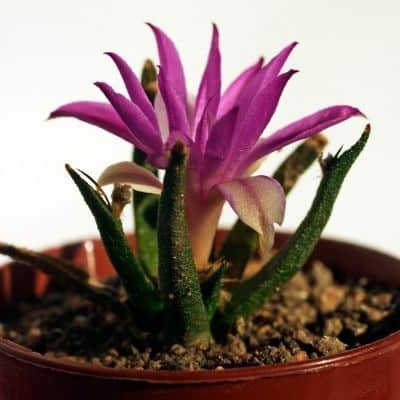
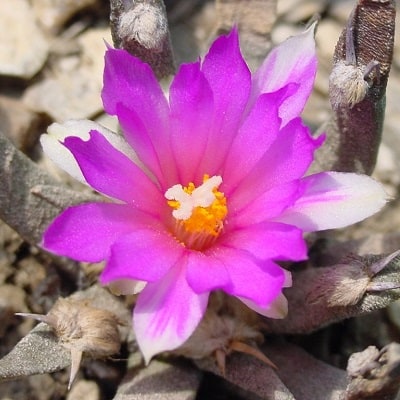
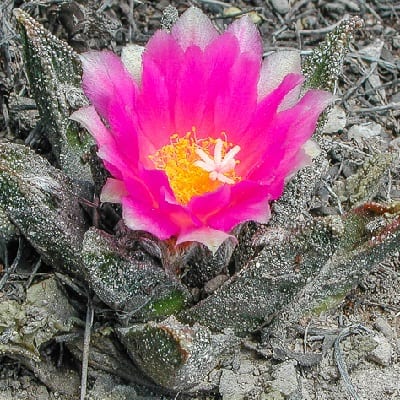
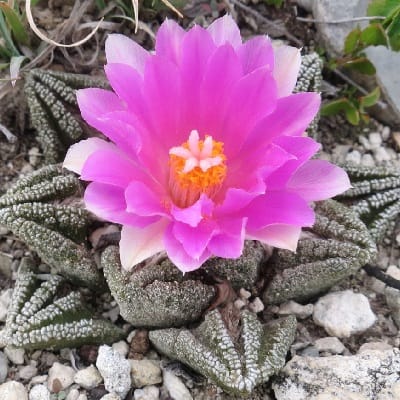



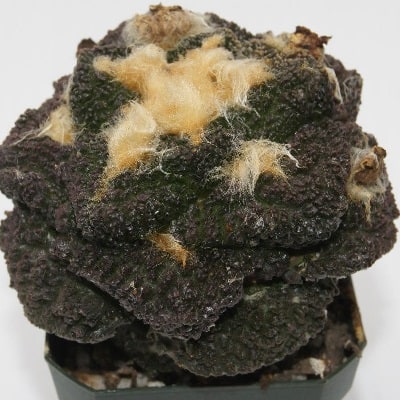
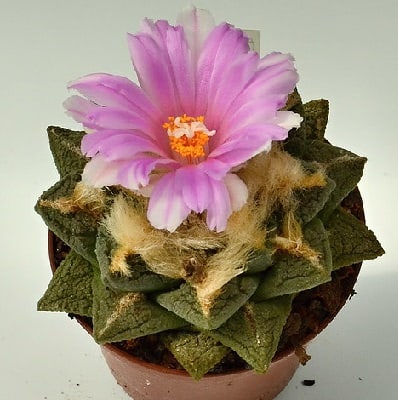
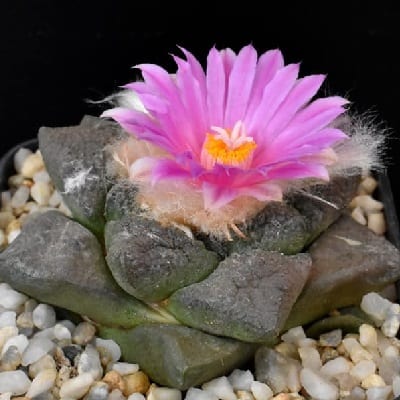
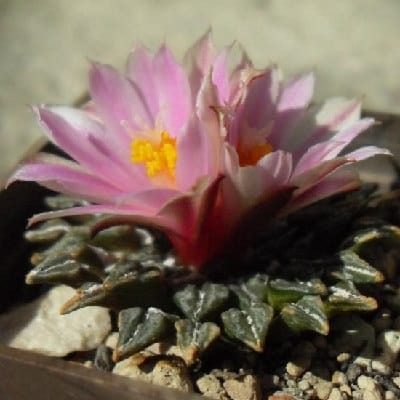
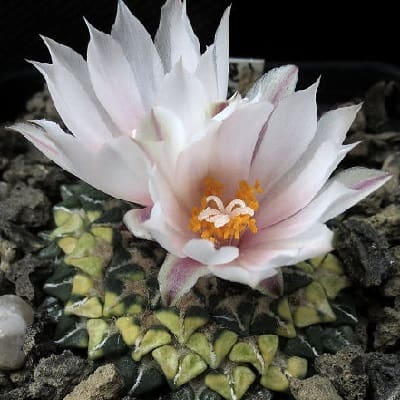
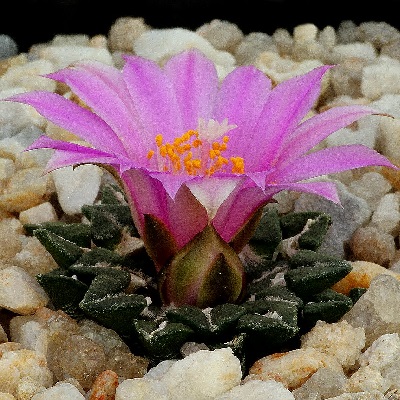

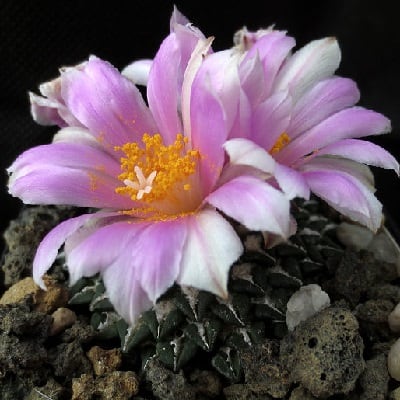
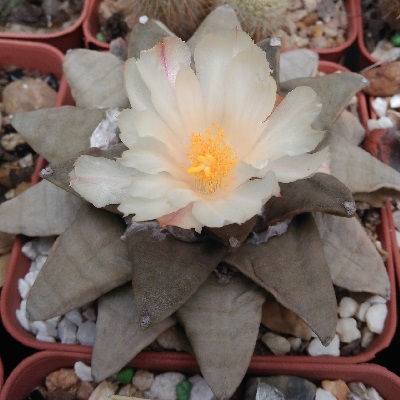
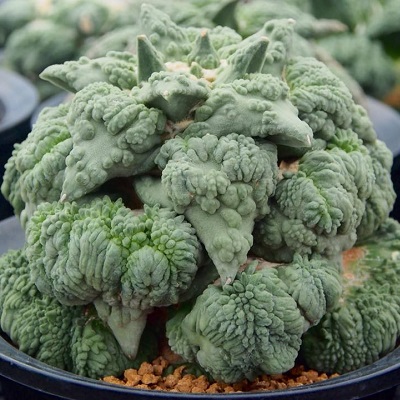
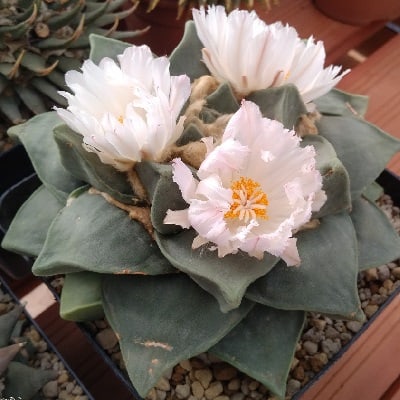
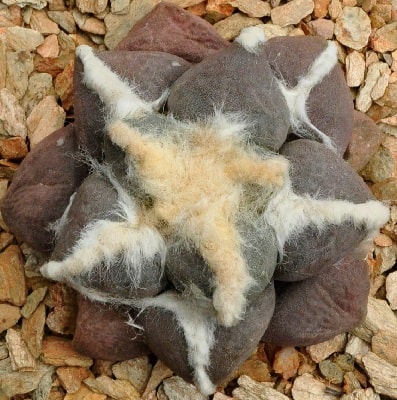
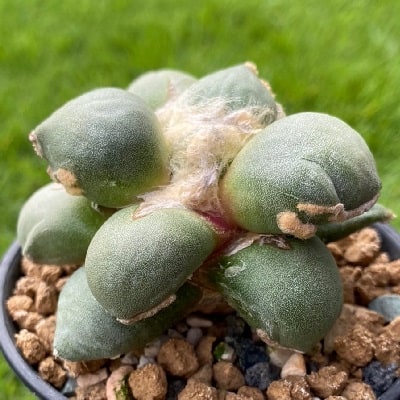
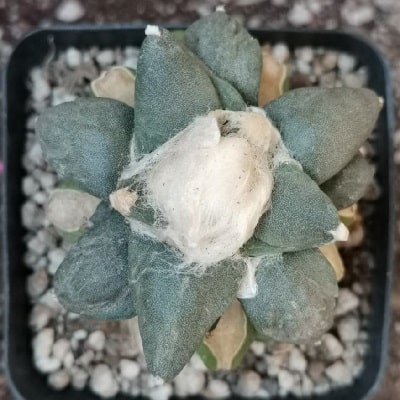
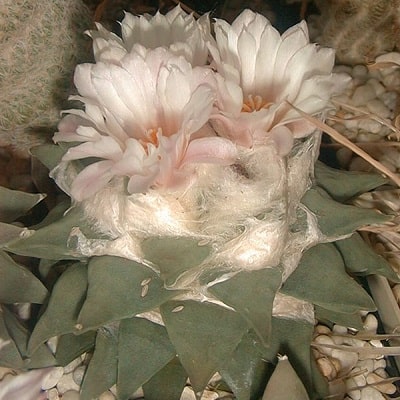

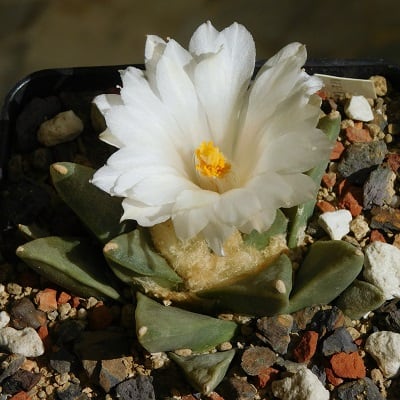
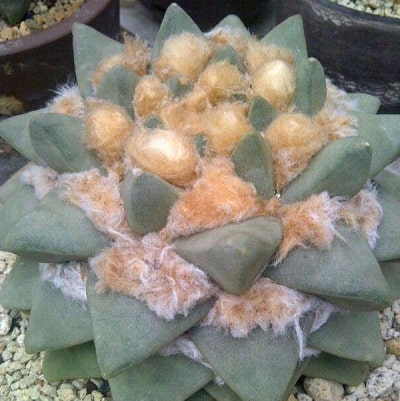
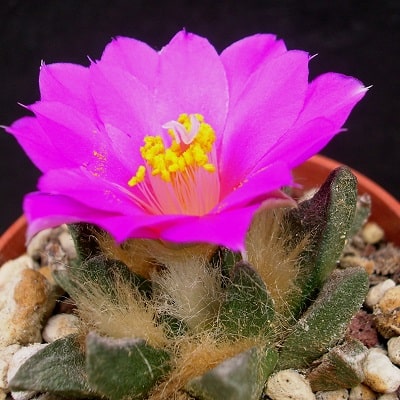
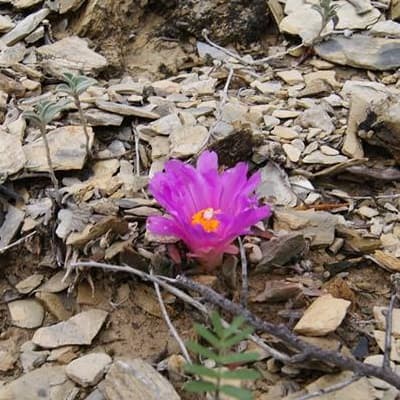
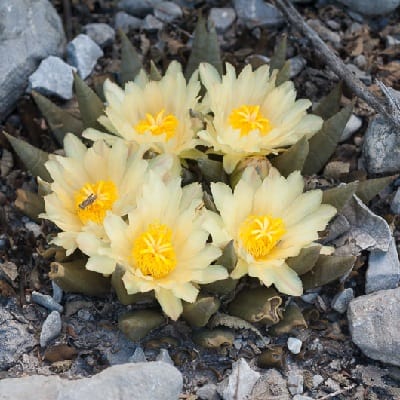

Related Post:
1,000 Types of Cacti with Pictures
Ariocarpus agavoides

This Ariocarpus species has stiff, dark green tubercles that give it a unique appearance more similar to a Haworthia or small Agave than a typical cactus.
Ariocarpus agavoides subs. sanluisensis

The “sanluisensis” variety is known for having spines in the areoles, a feature also seen in some plants from Tula. While the plants from different populations may differ slightly in spines, their flowers, tubercles, and size remain similar.
Ariocarpus bravoanus

This solitary Ariocarpus species forms a rosette shape with dark green verrucose tubercles. It serves as a link between the subgenera Ariocarpus and Roseocactus.
Ariocarpus bravoanus subs. hintonii

This rosette-shaped cactus has triangular, rough, dark green verrucose tubercles. It is a variation of Ariocarpus bravoanus.
Ariocarpus confusus

Ariocarpus confusus is a special type that shares characteristics of both Ariocarpus retusus and Ariocarpus trigonus. It often has deep magenta flowers, which are uncommon in other populations of A. retusus/trigonus.
Ariocarpus fissuratus

This geophyte plant forms a star-shaped rosette with fleshy, deltoid to hemispheric tubercles. It grows slowly and is usually solitary.
Ariocarpus fissuratus var. intermedius

This variable species includes a variant called Ariocarpus lloydii. Some populations show transitional characteristics known as Ariocarpus intermedius. It grows slowly and is usually solitary.
Ariocarpus fissuratus var. lloydii

This Ariocarpus species is distinguished by its above-ground stem that is higher, rounded, and more convex compared to the standard Ariocarpus fissuratus.
Ariocarpus fissuratus cv. Godzilla

This cultivar stands out with its strongly structured surface and deep color, although some variations may be greener or woollier.
Ariocarpus fissuratus cv. Green Coral

An amazing cultivar with rough, round, and short leaves that developed from Ariocarpus fissuratus cv. Godzilla. It features larger and longer green warts on its tubercles.
Ariocarpus kotschoubeyanus

These flat geophyte cacti form small star-shaped rosettes close to the ground. They often have a large tap root below the surface.
Ariocarpus kotschoubeyanus subs. albiflorus

A dwarf cactus with a unique shape, distinguished by its white or pale pink flowers.
Ariocarpus kotschoubeyanus subs. sladkovskyi

Differs from other red-flowering kotschoubeyanus by having a smoother and shinier epidermis.
Ariocarpus kotschoubeyanus var. elephantidens

This larger form has highly textured, triangular tubercles and deep purple flowers.
Ariocarpus kotschoubeyanus var. macdowellii

Found in northern populations, it is smaller with beak-like tubercles and pale mauve flowers.
Ariocarpus retusus

Commonly known as the “Star Rock,” it forms a starry rosette with fat triangular tubercles. This species is extremely variable, leading to the creation of several variants with no botanical value.
Ariocarpus retusus subs. elongatus

Differs from the standard Ariocarpus retusus only in its longer and thinner tubercles.
Ariocarpus retusus subs. pectinatus

This variety has short pectinated spines already present in young specimens, gradually covered by fur in adulthood.
Ariocarpus retusus subs. scapharostroides

Characterized by erect angular tubercles resembling Ariocarpus scaphirostris.
Ariocarpus retusus cv. Cauliflower

An odd cultivar with warty and bumpy epidermis, resembling the features of a cauliflower.
Ariocarpus retusus cv. Frumdosus

Unlike the typical species, this cultivar has flat and smooth tubercles, resembling a tetrahedron.
Ariocarpus retusus cv. Maruibo

This cultivar features fat round tubercles with large woolly areolae, resembling small spheres.
Ariocarpus retusus cv. Mituibo

An odd cultivar with tubercles split into three points, resembling three fingers or a trident.
Ariocarpus retusus cv. Tama Botan

This cultivated selection has wide leaflike, divergent tubercles that are as wide as long or wider in adult specimens.
Ariocarpus retusus var. furfuraceus

Differs from the standard Ariocarpus retusus in its equilaterally triangular tubercles.
Ariocarpus scaphirostris

This slow-growing, grey-green cactus barely rises above ground level.
Ariocarpus scaphirostris var. swobodae

A geographical form of Ariocarpus scaphirostris with very soft tubercles.
Ariocarpus trigonus

This species is one of the largest and features long leaf-like triangular tubercles and distinctive yellow flowers. It exhibits significant phenotypic variation without botanical value.
Ariocarpus trigonus var. horacekii

Differs from the standard Ariocarpus trigonus only in its smaller size.
How to Care for Ariocarpus Cacti
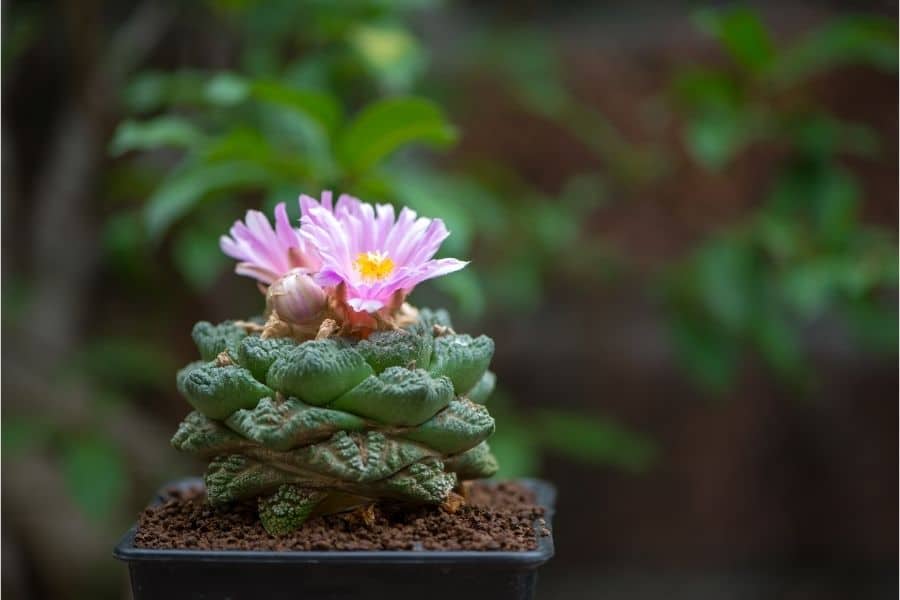
Light
Ariocarpus cacti require direct sunlight for a few hours each day. If grown outdoors, place them where they receive sufficient sunlight. In hot climates, provide shade during the hottest parts of the day to prevent damage.
Watering
Water the cacti regularly during their growing season (spring to fall). Let the soil dry before watering again to avoid overwatering and root rot. During winter, when they are dormant, they require less water.
Soil
Use well-draining soil, such as cactus potting soil or a mix of soil, perlite, and sand. Ensure the soil allows water to drain quickly and consider adding limestone for better growth.
Fertilizing
Apply a balanced fertilizer once a month, diluted to avoid overwhelming the cactus. Fertilize when watering, approximately once a month. During winter dormancy, fertilizer is unnecessary.
Pests and Diseases
Watch out for pests like mealybugs and scale diseases. Spot them early and use pesticides or homemade solutions like rubbing alcohol. Overwatering, overfertilization, and inadequate pot size can also cause issues.
How to Propagate Ariocarpus
There are two common methods for propagating Ariocarpus: using seeds or cuttings. Let’s explore each method in more detail.
Propagation from Seeds
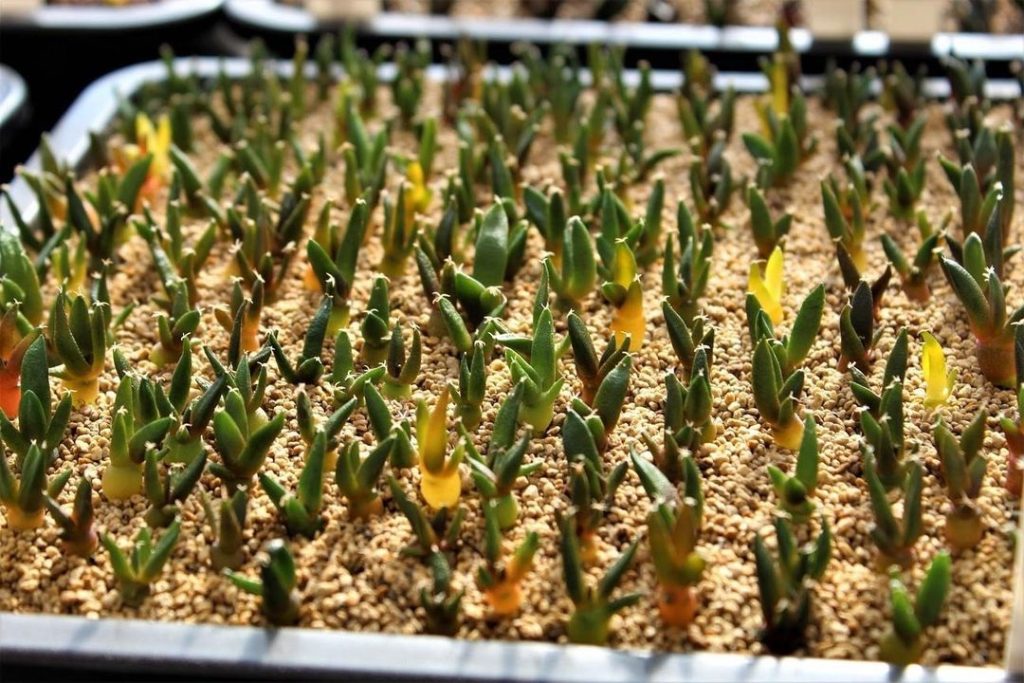
- Collecting Seeds: To start, you can either purchase Ariocarpus seeds from a reputable source or collect them from ripe fruits of mature plants. Harvest the seeds when the fruits are fully ripe and the capsules have opened.
- Preparing the Soil: Fill a well-draining pot or container with a cactus-specific soil mix. Ensure the soil is loose and coarse to facilitate water drainage. You can also add some perlite and sand to improve aeration.
- Sowing the Seeds: Place the seeds on the soil surface, distributing them evenly. Press them gently into the soil without completely burying them.
- Providing Optimal Conditions: After sowing the seeds, lightly mist the soil with water to ensure it is moist but not waterlogged. Cover the pot with a clear plastic wrap or a humidity dome to create a greenhouse-like environment. This helps maintain moisture and temperature consistency.
- Ensuring Proper Environment: Place the pot in a warm location with indirect sunlight. Maintain a temperature between 70-90°F (21-32°C) for successful germination. It may take several weeks to a few months for the seeds to germinate, so be patient.
- Watering the Seedlings: Once the seedlings emerge, remove the plastic wrap or dome gradually to acclimate them to ambient conditions. Water the seedlings sparingly, ensuring the soil remains slightly moist, but be cautious not to overwater.
- Transplanting Seedlings: As the seedlings grow and develop true leaves, they can be transplanted into individual containers filled with the same well-draining cactus soil mix. Handle them carefully to avoid damaging the delicate roots.
Propagation from Cuttings
- Obtaining Healthy Cuttings: Look for healthy, mature branches or offsets (“pups”) that have naturally detached or can be gently separated from the parent plant. Make sure the cuttings are dry and calloused before proceeding.
- Preparation and Planting: Fill a well-draining pot with cactus soil and make a small hole with your finger or a pencil. Insert the base of the cutting into the hole, ensuring it stands upright. Be careful not to bury it too deep.
- Providing Adequate Care: Place the pot in a bright location with indirect sunlight. Avoid direct sun exposure initially to prevent sunburn on the vulnerable cutting. Water the soil lightly, just enough to keep it mildly moist, but remember not to overwater.
- Establishing Root System: Over time, the cutting will develop roots and grow into an independent plant. During this process, it’s crucial to maintain patience and minimal disturbance to allow the roots to establish a strong foundation.
Remember, both methods require time, attention, and patience. It can take several months or even years for the propagated plants to reach maturity and display their distinctive characteristics. However, the joy of successfully growing Ariocarpus from seeds or cuttings is immensely rewarding for cactus enthusiasts.
How Fast Do Ariocarpus Grow?
Ariocarpus cacti have a slow growth rate and can grow up to 20 cm tall. It can take these cacti several years to reach this height, sometimes even taking fifty years. Even if you are growing it at home, this cactus might take up to ten years to start growing flowers. Apart from that, however, it will keep growing gradually every year. Using cuttings will make the process slightly faster as compared to seeds.
